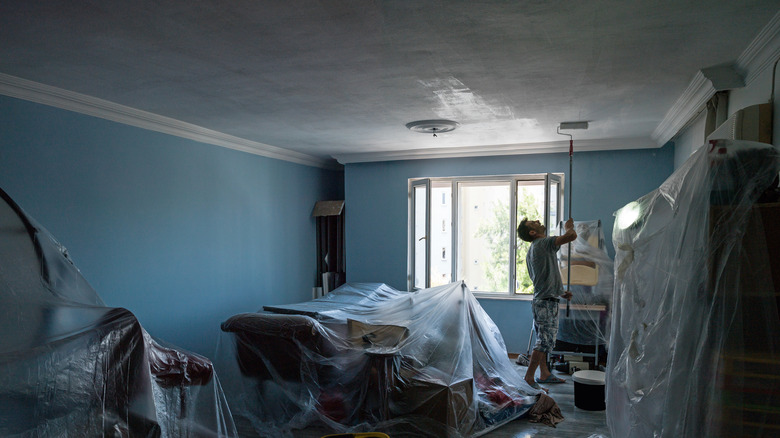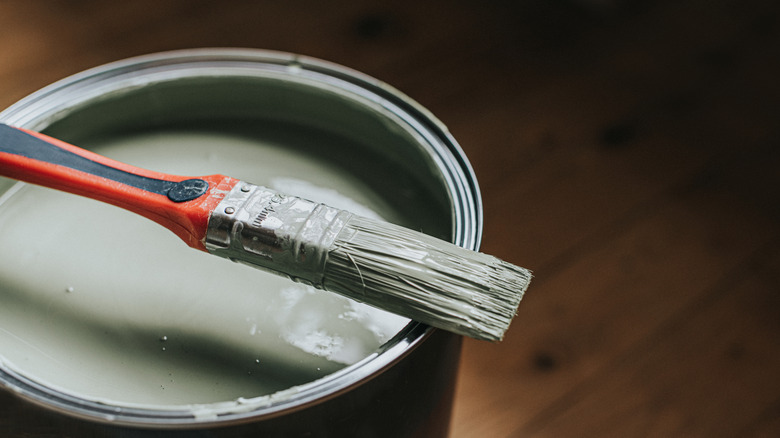The Paint Design You Should Try If You're Wary Of Color Drenching
One thing you can count on when it comes to the Internet is finding an alternative to a home trend you want to try but can't fully commit to. One example would be color drenching, the popular paint design that covers an entire room in one shade for a really unique finish. However, it can be a daunting trend, especially if you tend to switch up your aesthetic or decor often, or just aren't sure you can stick with one color for a long time. If you like the idea but have been on the fence about trying it in your home, you may want to consider the 1/4 rule. This combines the chic look of color drenching with the exception of the ceiling, which is painted with a fraction of the wall pigment to produce a lighter shade that adds dimension.
This clever trick allows you to embrace the richness and drama of color drenching, without making a room feel too overwhelming or monochromatic. The trend of double drenching has become popular as it allows people to combine more than one hue within a similar palette in a room, whereas this 1/4 hack gives you another way to try multiple shades while still drenching. By incorporating a lighter version of your wall color you ultimately create an airy, layered effect that brings a cozy and unexpected element to any room.
Use a lighter shade on your ceiling
What really sets this trend apart from traditional color drenching is that you're creating separation within a space while still making it intimate. One of the main reasons you should be painting your ceiling is that it brings dimension and visual interest to a room. By keeping the wall paint and ceiling paint so similar, you're still incorporating the idea of "blurring" the edges of your room (which is why people color drench), while adding a layered effect for color variation. The lighter shade above allows you to use different colors throughout the room, rather than only the single paint shade. Introduce more texture by incorporating different finishes on the walls and ceiling, using a flat finish for the latter and eggshell on the walls.
Some of the best areas in your house to color drench or use the 1/4 rule include bedrooms and smaller areas like mud rooms, bathrooms, or home offices. Classic color drenching can make the ceiling appear lower in some spaces, creating a more intimate or cocooned aesthetic. While some people prefer this look, others may not want the more condensed vibe it produces, which is why painting the ceiling a slightly lighter shade is a good alternative.
How to get the 1/4 pigment for your ceiling
Common mistakes to avoid when color drenching are using colors that are too bright or too dark, so keep that in mind when picking out your hues. The simplest way to get the color you need for your ceiling is to ask an employee at the store to create a new color made with only a quarter of the pigment from your wall color. They can mix the saturated color with either a base made of white paint, or an undertone that suits your needs. They may even use your wall color as the base, adding white to lighten it.
If you want to try and mix the paint pigment yourself, it may be worth at least consulting a professional to get some ideas on how to properly determine the quantities. Or, you could try just adding a little pigmented paint to a can of white paint until you get the shade you want. This is less of the 1/4 rule and more of a DIY version, but it also allows you to decide on the shade when you see it rather than just going with a standard measurement.


